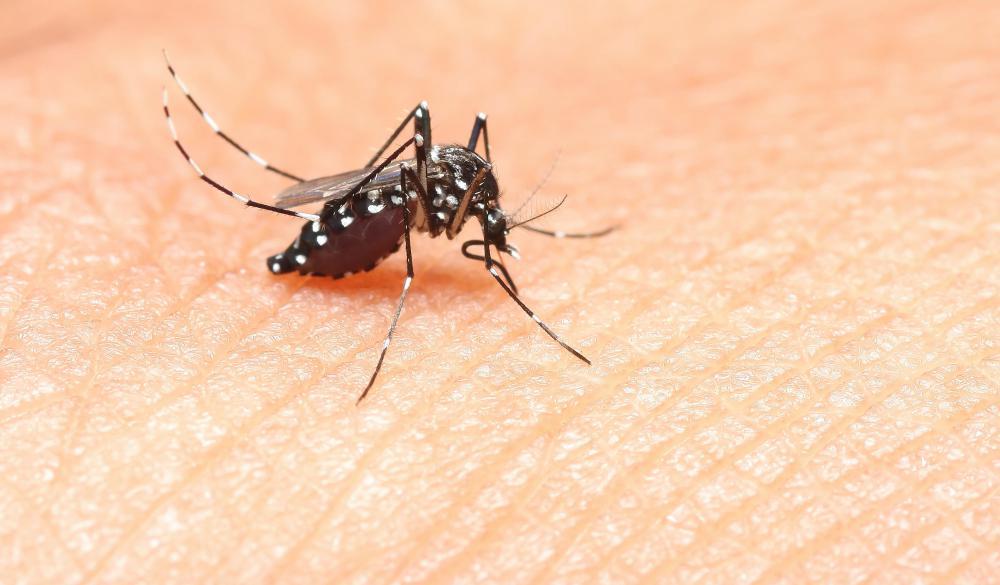At WiseGEEK, we're committed to delivering accurate, trustworthy information. Our expert-authored content is rigorously fact-checked and sourced from credible authorities. Discover how we uphold the highest standards in providing you with reliable knowledge.
What Causes Hemorrhagic Fever?
The term hemorrhagic fever is used to describe several severe and life-threatening viruses, usually spread from either insects or mammals to humans. Some examples of hemorrhagic fever include the Ebola virus, yellow fever, and the Marburg virus. Most viruses resulting in hemorrhagic fever are localized to a specific area. For example, the Ebola virus and the Marburg virus are both found primarily in parts of Africa.
All types of hemorrhagic fever are extremely serious illnesses, and carry high death rates. This is because the virus quickly and effectively works to shut down the body’s organs and cause mass bleeding or hemorrhaging of the organ. Beginnings of symptoms are flu-like, with hemorrhagic fever causing fever, chills and sore throat. Within a few days of onset of symptoms serious organ failure is noted, particularly in the liver.

Few forms of hemorrhagic fever have cures. Yellow fever does have a vaccination that is quite effective in preventing the illness caused by mosquito bites. Ebola and Marburg do not have vaccinations, and there is no standard treatment, besides hospitalization, isolation, administration of fluids, and anti-viral medications. Since hemorrhagic fever is caused by viral rather than bacterial infection, antibiotics cannot eliminate the virus. Even with treatment, Ebola virus of the Zaire type has a 50% death rate.

Ebola, in particular, seems to be caused by direct contact with infected primates. Airborne transmission seems to be minimal. However, those who have either consumed monkeys with the virus, or been around the carcasses of infected non-human primates are at increased risk for contraction. Once the virus has entered the human body, normal means of transmission to other people is through contact with a person’s body fluids, as with sexual activity.

When outbreaks of Ebola or Marburg hemorrhagic fever occur in Africa, the first case can usually be tied to direct contact with an infected primate. One case occurred in the US in Maryland. The woman infected with Ebola hemorrhagic fever was working with an infected primate and accidentally stuck herself with a needle that had previously been used on the sick monkey.

Viruses spread from animals to humans are called zoonoses. Certain viruses that result in hemorrhagic fever may also be the result of contact with rodents. Hantavirus, which has been found in the US, primarily in the southwest, is known to be contracted by contact with dormice feces and urine. Since this virus can be inhaled during cleanup of feces, pest controllers should handle any home infestation. Eliminating home infestation of rodents significantly eliminates risk.
Some are concerned that hemorrhagic fever like Ebola may be engineered for use in biologic weapons. So far, there is no evidence that any viral engineering has taken place, or that any countries are in possession of weapons containing these viruses. Concern remains high, however, since mutation of hemorrhagic fever could cause these viruses to be transmitted more easily and result in superstrains that could kill millions of people.
AS FEATURED ON:
AS FEATURED ON:














Discussion Comments
@ Bronze Eagle
Wow, thank you. Now I'm really scared. What keeps the viruses from spreading like wildfire across the globe? Maybe the Doomsday Preppers are on to something?
I just looked up the congo crimean hemorrhagic fever and it sounds horrible. Your liver fails, you can't breathe properly, and your kidneys shut down. There's more, but how does anyone survive that?
@ Water Serpent
There are a lot of different kinds of hemorrhagic fever viruses. Have you ever heard of congo crimean hemorrhagic fever? Ticks give it to animals and then people who handle the animals can become infected. It's mainly in East and West Africa, for now at least. All hemorrhagic fever viruses have a high mortality rate.
Okay, I am completely freaked out. The article talks about viruses adapting and mutating and killing a lot of people. Hemorrhagic fever seems like it would be a horrible way to die. I know the CDC deals with these viruses, but how will we know if one mutates? Will we just wake up one morning and be hit with it?
Post your comments